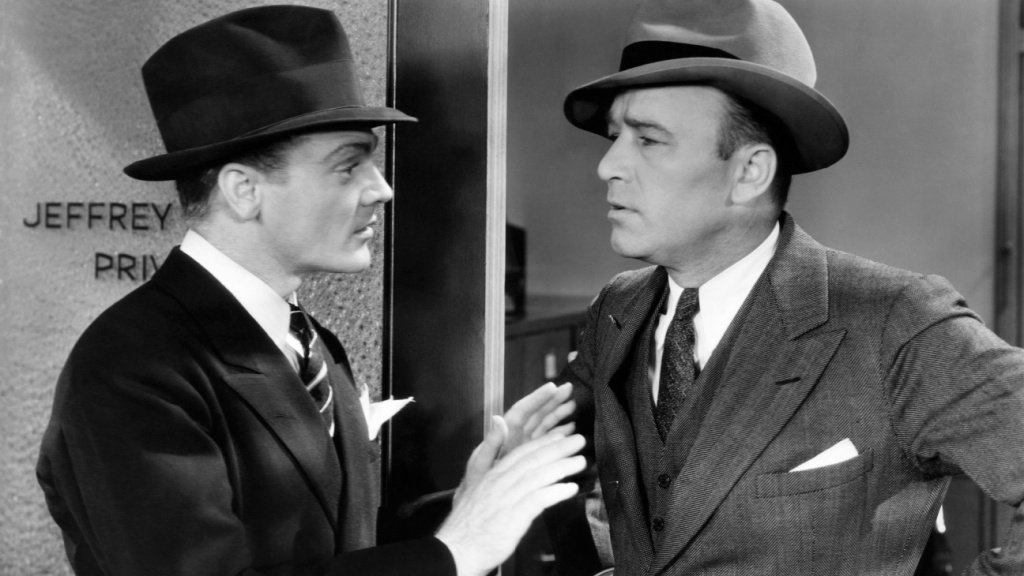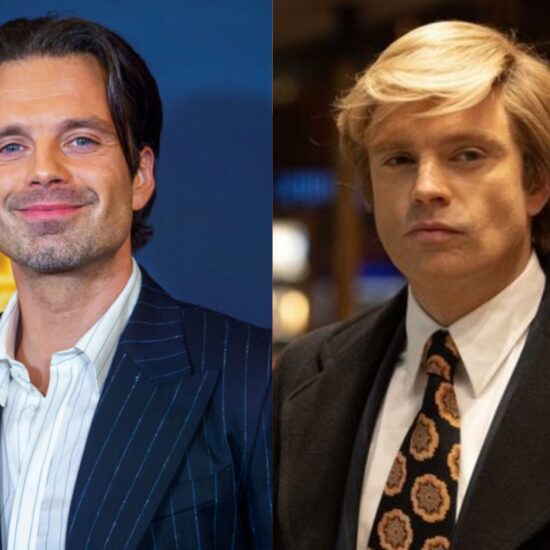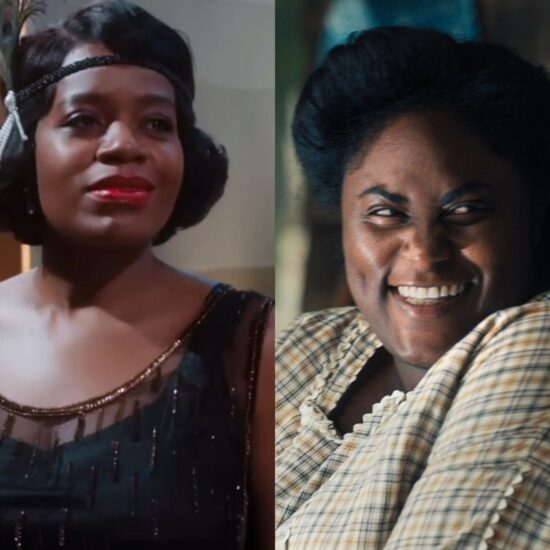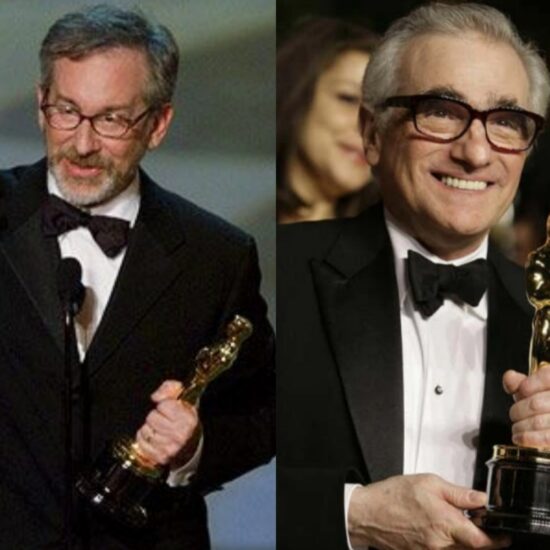
Martin Scorsese’s adaptation of David Grann’s Killers of the Flower Moon is the latest turn in a long motion picture tradition of pilfering FBI case files for screen scenarios. Originally, Hollywood coveted the validation of the bureau (“based on actual FBI case histories!”) and the personal imprimatur of its lord high ruler, J. Edgar Hoover (who in 1945 actually read life insurance commercials for NBC radio’s This Is Your FBI). Today, it often takes cues without the official stamp of the FBI shield. Either way, the two American institutions have enjoyed a profitable relationship.
Created in 1908 within the Department of Justice as the Bureau of Investigation and formally branded with the trademark initials in 1935, the FBI grew up during the first wave of electronic age media and took full advantage of the coincidence. Hollywood cinema (newsreels, shorts, and feature films), radio crime shows, comic strips and television series cheerfully operated as unpaid publicity for the FBI and the man who presided over it for almost fifty years. All the tributaries of the media tracked and facilitated the rise of the agency — dramatizing Hoover’s talking points about the need for the scientific study of crime and celebrating the dauntless exploits of its eternally vigilant leader. Only very late in the game did the major studios and broadcast networks cast a more jaundiced eye on the creature they had created.
Though an unlikely media star, J. Edgar Hoover was a master of manipulation. Born in 1895, an unsocial and unsmiling boy whose best friend was indeed his mother, he began his desk-bound career as a factotum at the Library of Congress, where he honed his penchant for cataloging information and indexing reality. Appointed to the Bureau of Investigation in 1917, he specialized in smoking out so-called subversive aliens before, at age twenty-nine, being appointed to head and reshape the agency in 1924. It was his life’s work.
Given the brazen corruption and incompetence that had been seen in local law enforcement, Hoover’s vision of a centralized headquarters to gather crime statistics, evaluate evidence and train a cadre of forensic-minded experts made sense. Grann’s book — a riveting true crime account of the serial killing of oil-rich members of the Osage tribe in Oklahoma in the 1920s — supports Hoover’s case. The cold-blooded murders of entire Osage families were a community effort perpetrated by pillars of the white community — aided and abetted by local businessmen, lawmen, doctors, and undertakers. In Grann’s telling, the investigation by federal agents is a quest for justice that also serves as a public relations coup for an FBI still in embryo.
In the early 1930s, the FBI seized an even better opportunity to make its bones. Prohibition had given birth to a new criminal type, the urban gangster, a tommy-gun toting outlaw ready-made for Hollywood’s early sound era. Like their real-life inspirations, the prototypes for an aborning genre — Little Caesar (1931), The Public Enemy (1931) and Scarface: The Shame of the Nation (1932) — channeled resentment against a flatlined economy in the nadir of the Great Depression. American politicians worried that the identification with the screen rebels might be more than vicarious, especially with tabloid newspapers barely bothering to conceal their admiration for the daring bank robbers or their contempt for the local lawmen whose hot pursuits screeched to a halt at state lines.
Hoover seized the opportunity. The most notorious and admired of the gangster breed was the stylish and trigger-happy John Dillinger, a criminal so popular that the Hays office forbade Hollywood from producing any film based on his exploits. No matter: the FBI made sure that Dillinger secured a lasting place in motion picture history. On the sweltering evening of July 22, 1934, after watching MGM’s gangster-themed Manhattan Melodrama (1934) at Chicago’s air-cooled Biograph Theater, Dillinger was gunned down by FBI ambushers led by special agent Melvin Pervis. Dillinger, Public Enemy No. 1, a short released soon after the execution, delivered the curtain line. Over a picture of a very dead Dillinger laid out on a slab in the Chicago morgue, the narrator brags, “The federal government always gets its man!” Emphasis on federal.
For both the FBI and Hollywood, 1934 was a tipping point year. The Roosevelt administration was vacuuming power away from cities and states and into Washington, D.C., and among the many alphabet agencies created under FDR’s New Deal none would prove more enduring and powerful than the FBI. Meanwhile, in Hollywood, the establishment of the Production Code Administration, headed up by Joseph I. Breen, began to enforce its own kind of law and order over American cinema. The Breen office was hip to the scam Hollywood always played in the gangster pictures — revel for 85 minutes in the gunplay, fast cars, cool clothes, and slinky molls before exacting a crime-does-not-pay penalty in the last five minutes.
With Breen’s imperative, Hollywood shifted allegiances and embraced the new zeitgeist. Even the gangster specialists at Warner Bros. went straight with an act of repentance entitled G-Men (1935). (The term was coined by a second-rate hood with a first-rate moniker, Machine Gun Kelly, who in 1933 was cornered in his hideout by federal agents. Rather than go out in a blaze of glory, he put up his hands and pleaded, “Don’t shoot, G-men! Don’t shoot!”)
James Cagney played the lead G-man and the defection to the feds of America’s emblematic screen gangster marked a serious cultural turnabout. “Hollywood’s most famous bad man joins the ‘G-Men!’” shouted ads. Setting the pattern for every pro-FBI film that followed, G-Men fixated on the dazzling forensic tools of the emerging surveillance state and fetishized ballistics, lab work and fingerprints (today, substitute DNA). “It’s completely on the right side of the law, and hurray for the Department of Justice,” exulted The Hollywood Reporter. Studios around town all got with the program: United Artists with Let ‘Em Have It, MGM with Public Hero No. 1, Warner Bros. again with Special Agent, and Paramount with Men Without Names (original title: Federal Dick), all 1935.
1935’s Special Agent.
Everett
Throughout the 1930s, Americans could not turn on a radio or enter a movie house without being reminded of the crime busting G-Men and the selfless sentinel hailed by syndicated columnist Walter Winchell as “America’s top cop” and “the nation’s Number 1 G-man.”
A Universal short with the why-even-bother title You Can’t Get Away with It (December 1936) is typical. Produced with Hoover’s approval and on-screen participation, it promises an exclusive tour “behind the scenes with the G-Men” at the FBI’s new headquarters, built in 1935 to Hoover’s specifications. The camera lovingly lingers on file cabinets, crime labs, fingerprint notecards and mug shots. A squadron of lawyers, accountants, scientists and switchboard operators stand at the ready because “the FBI never sleeps!” (All men: there were no G-women until 1972). At the end of the tour, Hoover looks into the camera and reminds audiences that “the Federal Bureau of Investigation is as close to you as your nearest telephone” — meaning to dial 7117 for help. The frontier marshal, the county sheriff, the cop on the beat — all were being supplanted by Hoover’s data-gathering, buttoned-down investigators as the supreme personification of American law enforcement.
During WWII, turning from gangsters to Nazis, Hoover solidified his status as chief protector of the realm. In newsreels, radio spots and screen magazines, he appealed to home front Americans to report any suspicious activity. “Fighting silent battles on a silent front, nearly 4,500 FBI special agents led by director John Edgar Hoover are winning countless victories over the enemy’s invisible army of spies and saboteurs,” declared the March of Time in September 1942, urging moviegoers to “see Uncle Sam’s G-men at war!” Hoover lived up to the hype: Alfred Hitchcock’s Saboteur (1942) notwithstanding, no major act of home front sabotage occurred on his watch. Henry Hathaway’s The House on 92nd Street (1945) — “made with the cooperation and blessing of J. Edgar Hoover and his FBI organization” — commemorated the FBI’s war record, telling of how the G-men foiled a plot by Nazi spies to obtain American atomic secrets. The packed houses for the film, said a happy exhibitor, “proves that the FBI is SRO.”

1945’s The House on 92nd Street
In the postwar era, the surveillance apparatus put in place to detect Nazi agents was deployed and expanded to ensnare the new threat to domestic tranquility, real and imagined, the communist subversives. Hollywood filmmakers, listening to the clicks on their own telephones and noticing men in brown shoes and white socks taking down license plate numbers in studio parking lots, responded with a defensive cycle of anti-communist entertainment inspired by the exploits of former FBI agents who parlayed their credentials for personal aggrandizement. Among the offerings were I Was a Communist for the FBI (1951), Walk East on Beacon (1952), and the television series I Led 3 Lives (1951-53). By then, Hoover was the most unassailable figure in American public life, a true untouchable, beyond criticism, genuflected to by Republican and Democratic politicians alike.
For Hollywood, the consummation of the love match was Mervyn LeRoy’s The FBI Story (1959), based on the bestselling hagiography by Don Whitehead. At the beginning of the film, in Technicolor and Cinemascope, Hoover appears briefly at his desk, with wingman Clyde Tolson at his side. James Stewart stars as a composite agent whose career parallels the rise of the agency. The history according to Hoover ticks off the chapters in a life inseparable from the job, or rather vocation, that is the FBI: investigations of the KKK, the Osage murders, the Kansas City Massacre of 1933 (where four lawmen were killed and FBI agents thereafter got the right to carry firearms), Nazi spies, and Soviet infiltrators. The pre-credit sequence is the best: a tick-tock countdown to a mass murder that would have been fresh in the minds of 1959 moviegoers, an insurance scheme by Jack Gilbert Graham (played by Nick Adams), who in 1954 planted a bomb in his mother’s suitcase before she boarded a flight from Denver; the mid-air detonation killed all 44 aboard. In the two decades since G-Men and You Can’t Get Away with It, the agency has become even more omniscient, the web of surveillance spiraling outward in wider and wider circles, the march of forensic science closing in with an ever-tightening grip. As the evidence mounts, an agent tells Graham, “We don’t insinuate. We simply collect evidence.” Graham doesn’t stand a chance.

1959’s The FBI Story.
The FBI Story marked the high-water mark for FBI worship in postwar American culture. In the 1960s, the man whose name had always been uttered with reverence found himself out of sync with the new times. Sycophantic journalists and politicians suddenly grew a backbone: was it healthy for a democracy to enable a bureaucrat answerable to no one? Hoover’s decisive misstep was to smear the activists of the civil rights movement as communist-inspired fifth columnists. “Martin Luther King is a liar,” Hoover snarled in 1964, after King accused the FBI of slow-walking the investigation of the murders of the civil rights workers Andrew Goodman, James Chaney, and Michael Schwerner. Hoover never apologized for, or recovered from, the remark.
To burnish his image, Hoover coopted the new screen medium. Almost since the dawn of television, he had sought a prime time showcase for the FBI, but Attorneys General under Eisenhower and Kennedy had always nixed the deal, feeling Hoover’s profile was quite dominant enough. (ABC’s The Untouchables [1959-1963] was based on the exploits of Treasury Department — not FBI — agent Eliot Ness in Prohibition era Chicago, one of the rare instances where the T-men grabbed the spotlight from the G-men.) When the Johnson administration relented, Hoover became the de facto showrunner for ABC’s The FBI (1965-1974), which Variety frankly referred to as “a program designed to pull Hoover’s charred prestige out of the fire.”

ABC’s The FBI series, led by Efrem Zimbalist Jr.
Led by straight arrow Inspector Lewis Erskine (Efrem Zimbalist Jr.), the show’s video G-Men steered well clear of civil rights issues and performed no illegal bag jobs. Hoover read the scripts, planted an agent on set as a technical advisor, and made sure his photograph loomed backscreen. The series was sponsored by Ford, whose president at the time was a former FBI agent, and whose vehicles seemed to be the sole automotive brand permitted on American roadways.
When Hoover died in 1972, the obituaries were respectful — how could they not be? Few men in Washington had left behind such a legacy — but there was also a palpable sense of relief. In 1967, the passage of the Freedom of Information Act had cracked open Hoover’s secret files and, even with copious redactions, the internal memoranda revealed an astonishing number of FBI manhours had been spent chasing down screenwriters rather than mobsters. In 1971, revelations about the FBI’s domestic counter intelligence program (code named CoIntelPro), exposed the agency as a law onto itself. In 1975-1976, the Senate Select Subcommittee to Study Governmental Operations with Respect to Intelligence Activities, chaired by Sen. Frank Church, held hearings to investigate the investigators. The findings further exposed the FBI (along with other federal initials) as extra-Constitutional branches of what would later be labeled the Deep State.
A new generation of Hollywood filmmakers went in for the kill. Larry Cohen’s The Private Files of J. Edgar Hoover (1977) was the first of the major blacklash films, made when the revelations about the FBI were still shocking and the anger still hot. The burly, jowly Broderick Crawford is well-cast as a late period Hoover, raging as a lion in winter, a bundle of neuroses, especially about women. “He was the most feared man in America!” read taglines. But no more. Nor was Hollywood any longer parroting the official version. This time the pre-credit scrawl assures moviegoers that “this motion picture was filmed on actual locations of the FBI but without the approval or censorship of the bureau.” Already too, the film whispered the rumors of Hoover’s homosexuality that would have denied an FBI security clearance to anyone else in government. In the years since, few retrospective political dramas set in the 1960s — Hoffa (1992), Malcolm X (1992), Nixon (1995), Selma (2014) — have omitted a scene featuring J. Edgar Hoover or his minions nefariously pulling strings from behind the scenes to undermine the course of the justice they were pledged to uphold.
Today, of course, the political wing once most likely to deify the FBI wants to defund it. Yet for Hollywood filmmakers, whether revisionist (Clint Eastwood’s J. Edgar) or celebratory (basically every true crime show “drawn from actual case files!” on A&E and Netflix), the initials still retain a certain magic. Even cinematic serial killers have shown due respect for the brand. “You could only dream of getting out, getting anywhere,” hisses Hannibal Lecter in The Silence of the Lambs (1991) as he tries to psych out FBI agent in training Clarice Starling, knowing her ultimate ambition and savoring each letter, “all the way to the Ef … Be … Eye.”














